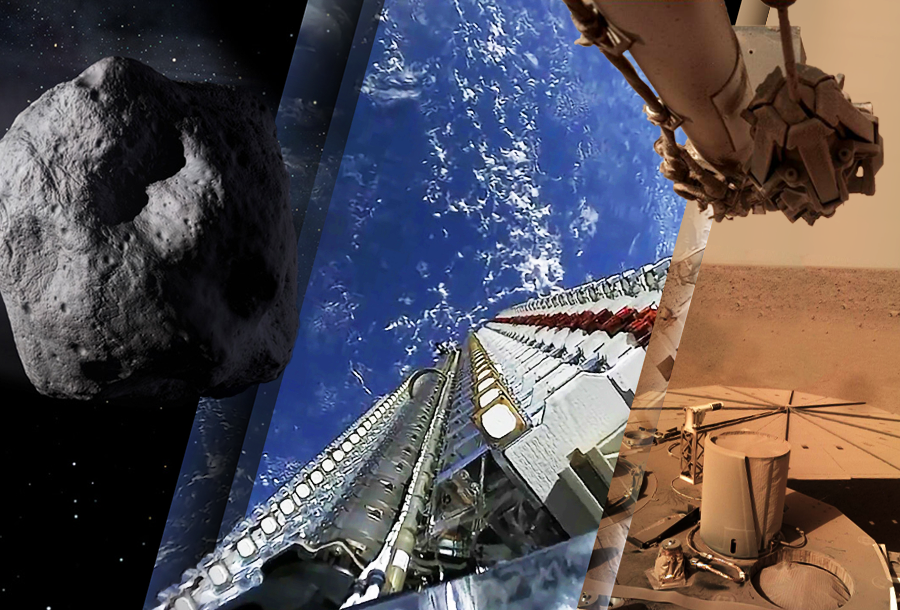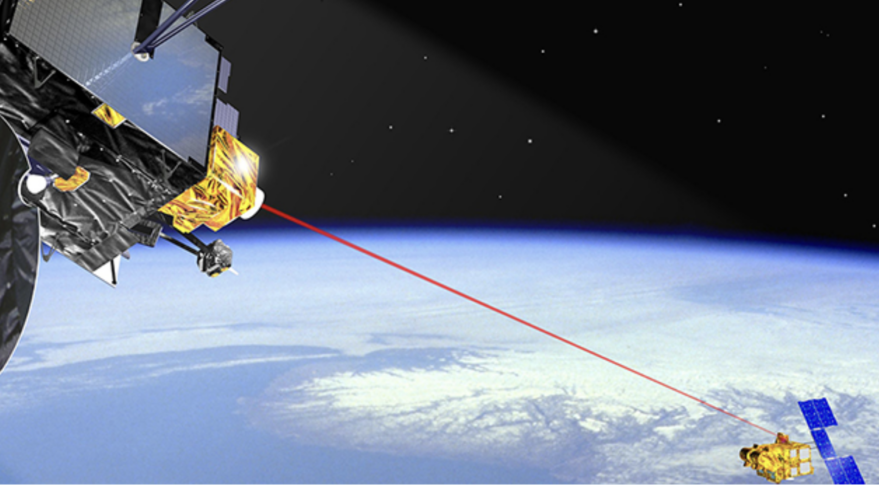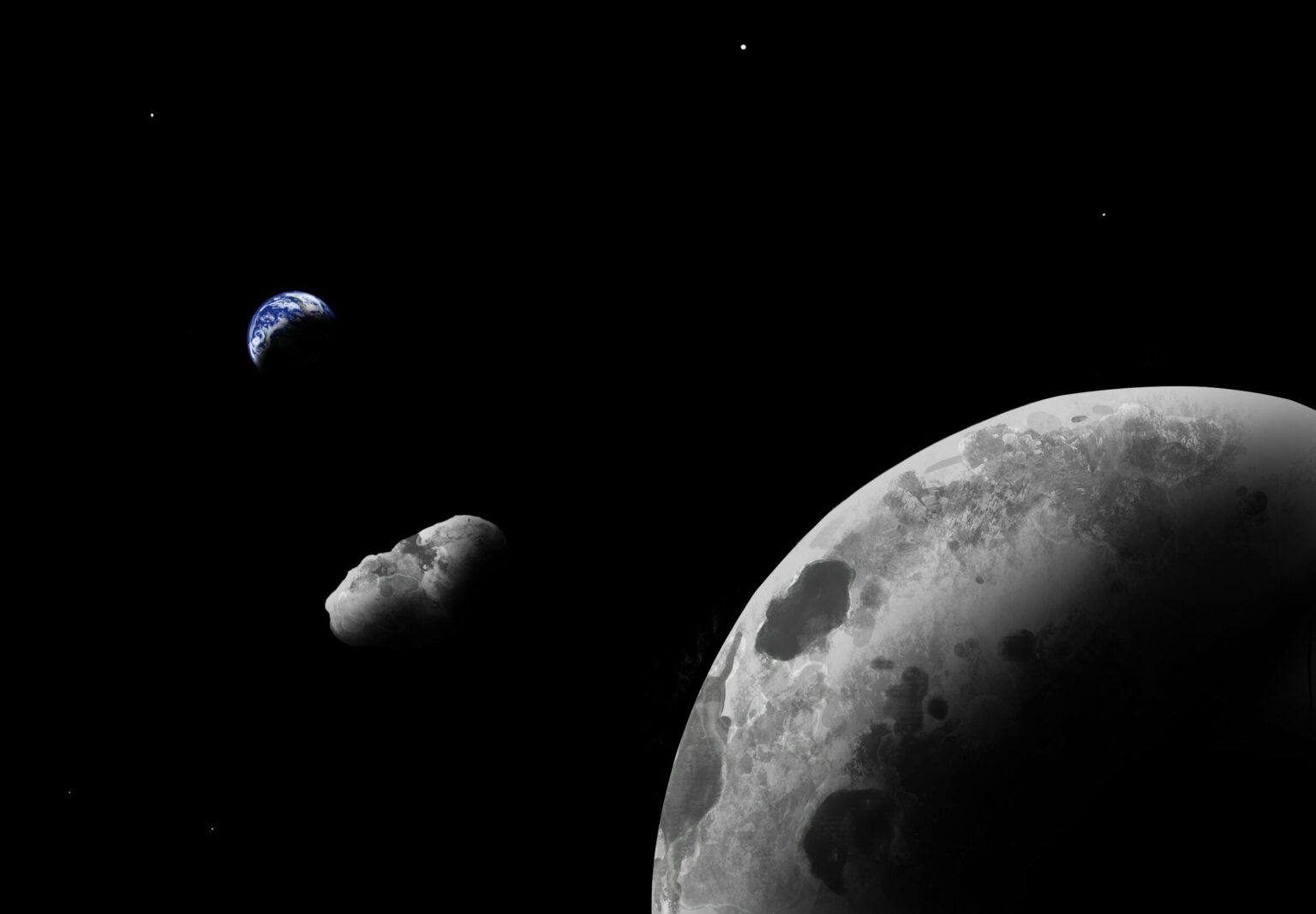Selection of space news for breakfast: How to earn billions on the resources of the Moon. Mitsubishi Electric has created 3D printing technology for satellite dishes in the vacuum of space, and Iran plans to launch satellites next year.

SpaceX rocket launches 53 Starlink satellites into orbit
The Falcon 9 rocket launch has successfully launched a new fleet of Starlink Internet satellites into orbit and returned to Earth. This launch was the third SpaceX Starlink mission in five days. SpaceX has already launched 21 missions in 2022, and 14 of them were dedicated to the launch of Starlink satellites.
NASA announced the date of discontinuation of the InSight mission
The InSight spacecraft will discontinue operation by December 2022. The reason is a thick layer of dust accumulated on the surface of the probe’s solar panels. If at the time of landing they generated about 5,000 watts of energy per hour, now this figure has decreased to 500 watts. As the output decreases further, there will inevitably come a time when InSight will no longer have enough energy to maintain communication with the Earth. InSight landed on Mars in November 2018. The main objective of the mission was to study the internal structure and tectonic activity of the Red Planet.
A race is afoot to make billions from the Moon’s resources
A new space race has begun. Over the coming years, an armada of rockets will head to the Moon to hunt down precious resources, satisfy the urges of billionaire tourists and maybe do some intriguing science along the way.
Market News

Military experiment demonstrates intersatellite laser communications in low Earth orbit
Two small satellites launched last summer by the Defense Advanced Research Projects Agency successfully established an optical link on April 14 during a nearly 40-minute test, according to CACI International, the supplier of the optical terminals. More than 200 gigabits of data were transmitted and received over a distance of about 100 kilometers, the company said. Optical terminals use lasers to connect satellites in orbit so they can transfer data in space.
Space Development Agency’s satellite contractors team up to deal with supply shortages
Facing a tight schedule to launch 28 satellites between September 2022 and March 2023, the Space Development Agency and its contractors have had to scramble to deal with parts shortages and other supply chain problems that have affected the entire space industry. Some satellite programs have been impacted by delays in the deliveries of microprocessors and focal planes arrays but SDA mostly has had to contend with a shortage of lower-end items.
Mitsubishi Electric develops technology for the freeform printing of satellite antennas in outer space
Mitsubishi Electric Corporation reports that the company has developed an on-orbit additive-manufacturing technology that uses photosensitive resin and solar ultraviolet light for the 3D printing of satellite antennas in the vacuum of outer space. The novel technology makes use of a newly developed liquid resin that was custom formulated for stability in vacuum. The resin enables structures to be fabricated in space using a low-power process that utilizes the sun’s ultraviolet rays for photopolymerization.
Iran planning to launch 7 satellites in March 2023
Iran continues production of seven homegrown satellites, which may be launched in March next year when designers are expected to put final touches on the projects, Islamic Republic News Agency (IRNA) reported on Monday. The spacecraft that are planned for the 2023 launch include the already manufactured Iranian Nahid, Pars-1 and Zafar satellites, while the remaining satellites are still under construction.
Interesting

The Chinese asteroid mission will be launched in 2025
The Chinese mission “Tianwen-2”, also known as “ZhenHge”, which is going to deliver a sample of asteroid matter to Earth, has entered the phase of construction and testing of components. It will be launched in 2025. After approaching the asteroid, the Chinese spacecraft will try to gain a foothold on its surface using four robotic arms. After sampling, the probe will “depart ” from the asteroid and make a maneuver that will send it back to the Earth. Reaching our planet, Tianwen-2 will drop a capsule with collected samples.
Satellite constellations would enhance Arctic weather observations
With Arctic aviation and maritime activity on the rise, Europe and Canada are taking the lead in developing weather satellites to gather global data and improve observation of the Earth’s northernmost latitudes. A consortium led by OHB Sweden AB is developing a prototype for the European Space Agency’s Arctic Weather Satellite, a proposed constellation of 16 small satellites in polar orbit to gather weather data, under a 32.5 million euro ($34.8 million) European Space Agency contract awarded last year.
Follow us on Twitter to get the most interesting space news in time
https://twitter.com/ust_magazine

